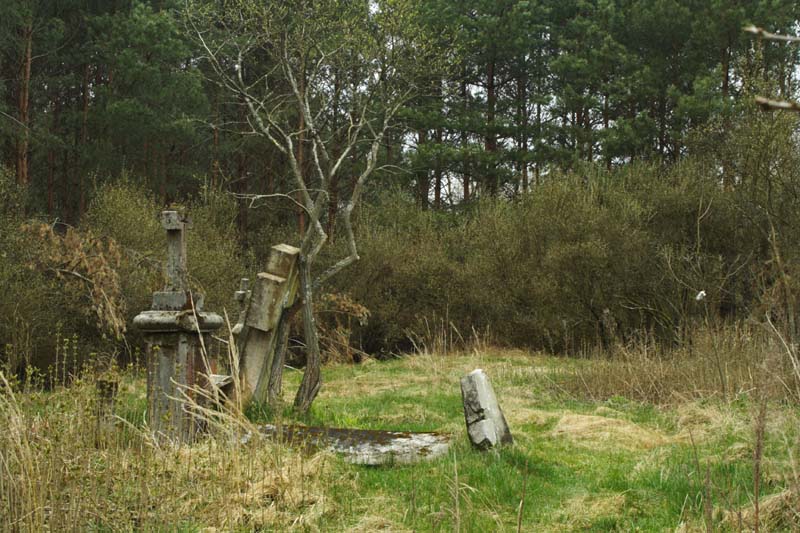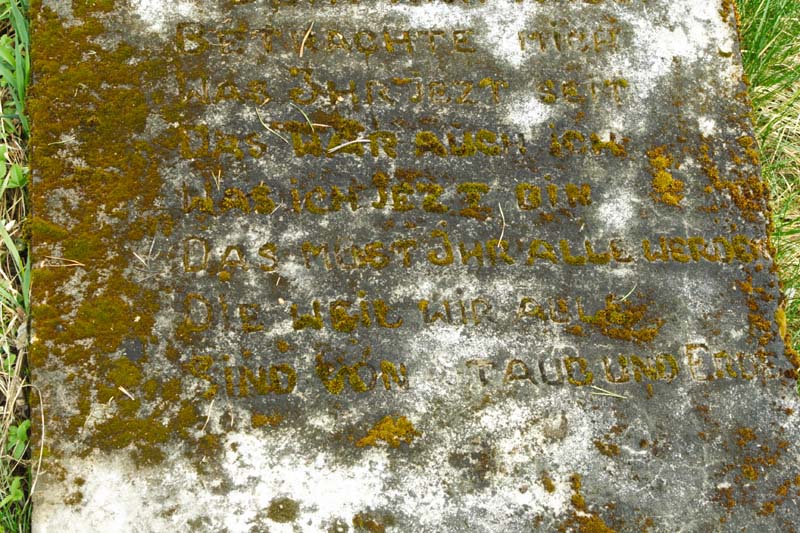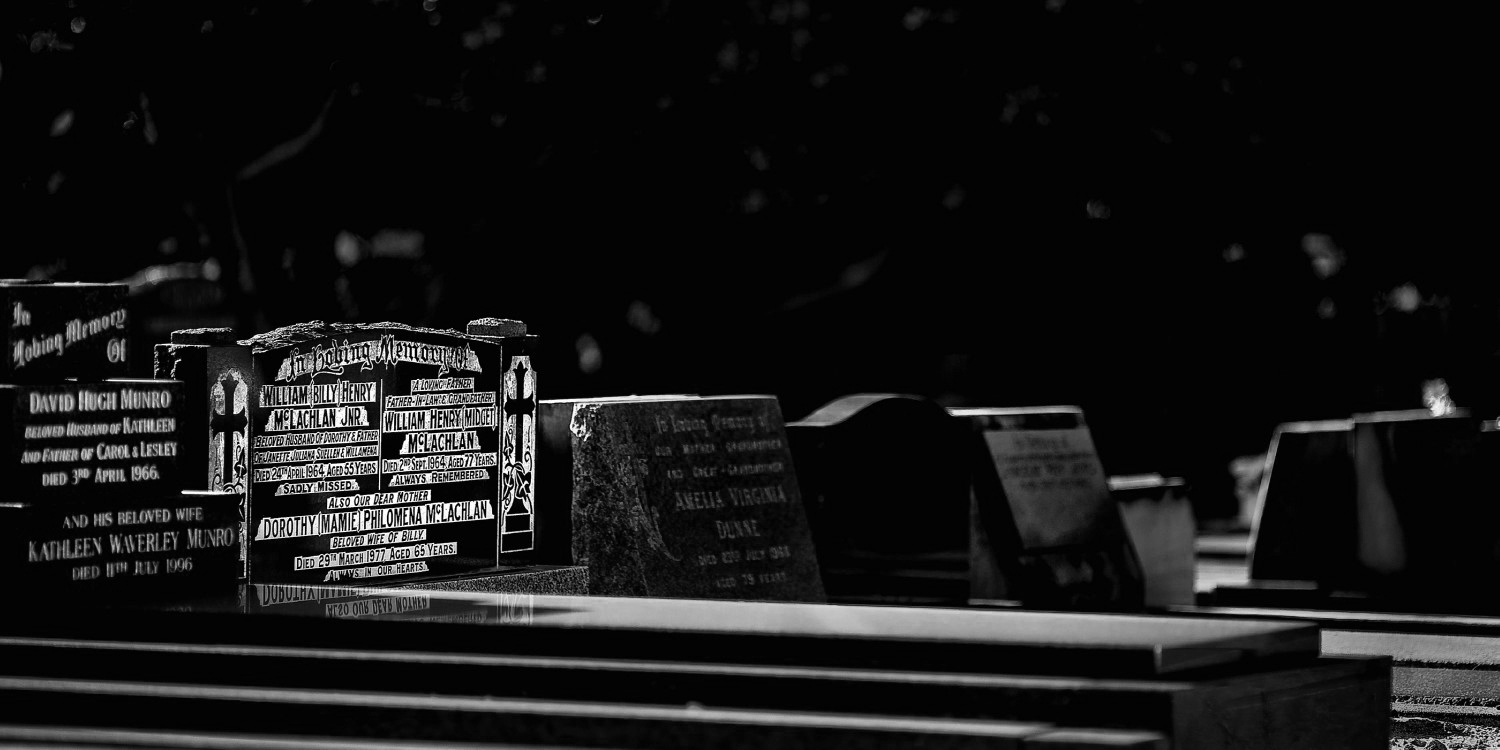 Helpful Posts: 0
Helpful Posts: 0
Results 1 to 20 of 27
-
26th June 2013, 09:49 PM #1
How to take images of an old cemetery ?
-
26th June 2013, 09:56 PM #2
Re: How to take images of an old cemetery ?
No. 2 would appeal more, its the intricate detail that you can capture, cemeteries are rarely good for 'landscapes'! In fact try capturing shots that leaves the view with doubt as to whether it is a cemetery, would be my take on this one. Otherwise you will end up with a series of 'record' shots, which I presume is not what you are trying to achieve.
-
26th June 2013, 10:06 PM #3
-
27th June 2013, 06:32 AM #4

- Join Date
- Feb 2012
- Posts
- 396
Re: How to take images of an old cemetery ?
I think that graveyards are a lot more challenging to photograph than they first appear. They are often quite flat, so none of the interest you get from the hills/valleys/mountains of a full on landscape. Also, as you are usually at ground level your view is foreshortened by surrounding fences and trees. As Scott Kelby would say, it is the sort of setting where you really need to "work the scene" to find a great shot. You need to move forward, backwards, left, right up and down trying to find a view that captures the essence of the graveyard.
My main problem with your first image is that too much of the image is uninteresting background scrubby trees - even in the tighter crop. I think that the normal landscape concept of wider depth of field is working against you here and that a narrower DoF would isolate the subject from the background and make for a more interesting image. Also, by shooting from the side you are not making the most of the gravestone's shape. While I wouldn't shoot straight on I would probably move more to the front (maybe 45 degree angle) to show off the front/shape of the stones better.
Other suggestions:
1. Come back at sunset and capture a silhouette of an interesting set of stones (plus tree or building).
2. Come at night with a wireless flash and capture a backlit shot of an interestingly shaped stone - or front lit with the background in darkness.
3. Is there a tower or roof? Ask nicely for access and shoot a landscape shot from there.
4. Look for lines - is there a line of gravestones? Walk around to the side, get down low and shoot the line of stones going away from you. Try narrowing your DoF to pick out one especially interesting stone in the line.
5. Walk all around the graveyard and see if you can find some interesting stones that have a more interesting backdrop.
6. Get down low.
7. Try shooting the stones more like a portrait than a landscape - by that I mean shoot as if it was a headshot or upper body shot and frame accordingly. Shoot from an angle with one edge of the gravestone cut off by the edge of the image and negative space on the other side (or a view of something else interesting in the distance.
8. Shoot between two stones (at something beyond them). Get down low, aim between two stones using all/part of each one to frame the shot.Last edited by dan marchant; 27th June 2013 at 06:40 AM.
-
27th June 2013, 07:13 AM #5
-
27th June 2013, 07:26 AM #6
-
27th June 2013, 07:50 AM #7
-
27th June 2013, 07:53 AM #8
Re: How to take images of an old cemetery ?
Get in closer to your subjects showing more of the detail.
-
27th June 2013, 08:14 AM #9
-
27th June 2013, 11:35 AM #10
-
27th June 2013, 09:20 PM #11

- Join Date
- Apr 2012
- Location
- Dunedin New Zealand
- Posts
- 2,697
- Real Name
- J stands for John
Re: How to take images of an old cemetery ?
The one shot that sticks in my mind probably can be found in Photo.Net "Photo of the Week'* ... worth hunting out

Although I in recent years have taken hundreds of cemetary photos their purpose was for descendants to see where their ancestors were burried ... 'record shots' and I was equiped with a spray can of water and a hand brush to help make them legible after a hundred years or so ....
If I was taking shots for myself I would go for interesting close-ups showing shapes texture and detail, as it was the three shots I took for myself were of two birds in foliage over the graves and an interesting, to me at the time, mushroom with a split rim
* I did for you ... http://photo.net/photo-of-the-week-d...n-forum/00ZoYn
Both shots are effectively wide and flat. The first was improved by the crop. The second calls to mind the saying that you take a wide shot of a mountain from five miles and a wide shot of a watch from five cm. Despite being closer it remains a wide shot.
EDIT after awhile ... two more interesting cemetery photos from that search .
http://photo.net/photo-of-the-week-d...n-forum/00At96
http://photo.net/photo-of-the-week-d...n-forum/00P4uuLast edited by jcuknz; 27th June 2013 at 10:02 PM.
-
27th June 2013, 10:07 PM #12

- Join Date
- May 2012
- Location
- northern Virginia suburb of Washington, DC
- Posts
- 19,064
Re: How to take images of an old cemetery ?
As others have mentioned, Dan did a really nice job of explaining how to approach a cemetery.
The one thing that I would add applies to close-ups (he calls them portraits) of grave stones. Try to shoot them when there is a strong light from the side to enhance the details of the letters etched in the stones. If the grave stones aren't positioned properly to do that using sunlight (keeping in mind that moonlight is sunlight), add your own light source to make that happen.
-
28th June 2013, 05:37 AM #13

- Join Date
- Feb 2012
- Posts
- 396
-
28th June 2013, 06:35 AM #14Moderator


- Join Date
- Feb 2009
- Location
- Glenfarg, Scotland
- Posts
- 21,402
- Real Name
- Just add 'MacKenzie'
Re: How to take images of an old cemetery ?
For the best image I've seen taken of a cemetery, see Mike's (Clactonian) picture of Tyne Cot, here.
-
28th June 2013, 11:57 AM #15
Re: How to take images of an old cemetery ?
Hi Darekk,
Most of what Dan says above + aim for high, slanting morning/evening light at right-angles or near as dammit - tae give long shadows for added atmosphere. Look for unusual patterns, shapes. Ye don't have tae concentrate on headstones but can give the impressions of death and decay - autumn leaves, snowy scenes etc.
[IMG]
[/IMG]
[IMG]
[/IMG]
[IMG]
[/IMG]
-
28th June 2013, 12:10 PM #16

- Join Date
- May 2012
- Location
- northern Virginia suburb of Washington, DC
- Posts
- 19,064
-
28th June 2013, 12:33 PM #17
Re: How to take images of an old cemetery ?
But what about fogs, old trees, candles, cobwebs, sculptures, epitaphs ?
Graves are so depressing. The life is worth nothing. We are sentenced to death at the birthday and forced to live for short time following instincts, like slaves of a cruel being from the afterworld, in 100 years no one living today will walk streets, including children.
You guys seem to avoid a little crosses and other religious symbols. I hope that you don't belong to PO party.Last edited by darekk; 28th June 2013 at 01:03 PM.
-
9th August 2013, 02:23 PM #18
Re: How to take images of an old cemetery ?
There are some gorgeous cemeteries in and around Toronto and I adore taking pictures in them. There is nothing more serene and contemplative than wandering around an old cemetery capturing photos.
The only unfortunate thing about many of the cemeteries I have been in is the amount of vandalism that I have encountered. Yes, maybe some of it has been caused by age and the elements but some of it has definitely been intentionally done.
Salem is one of my absolute favourites. Not only is it a very old cemetery but it's location is very remote and quiet. I saw nobody at all on my last visit and I was left in peace and quiet. It is a lovely place.
Salem Cemetery - Ajax, Ontario.
"Located approx. two km. south of the founding of Pickering Township. The Salem Church and Cemetery were est. on land donated by Mr. John Adamson. Built originally as a wooden structure in 1849, the church served the Wesleyan Methodist congregation. In 1880, brick veneering was added. Bricks for this undertaking were made in Mr. Adamson's brickyard which was located immediately to the west side of the property. Regrettably, the church closed in 1890. The cemetery continued to serve the local community and land was added at various times as the need arose. To commemorate the 150th anniversary, new entrance gates were erected."


-
9th August 2013, 03:01 PM #19
-
9th August 2013, 03:03 PM #20




 Reply With Quote
Reply With Quote



